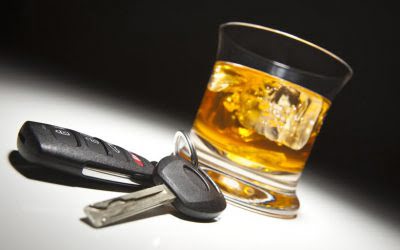Some patients dropped out due to nalmefene’s side effects—similar in profile to those of generic naltrexone, and which some subjects in the placebo group also perceived. At six-month followup, there were no significant differences between the nalmefene and placebo groups in terms of heavy-drinking days or total consumption. The average amount drunk per day in the nalmefene group went from 84 grams of ethanol to 33; in the placebo group it went from 85 grams to 45.
About Medical News Today
A careful drug use history and urine toxicological screening should be used to confirm abstinence from opioids, including prescribed pain medications, and a lack of opioid dependence before initiating treatment. A comprehensive urine test should be used to measure methadone and other opioids. However, urine testing can be subject to error because typical urine screening tests may not cover all opioids and samples can be tampered with to affect the results.
Find rehab for yourself or a loved one by speaking with a treatment provider. Start the conversation, and connect with a treatment provider who can help. After naltrexone is injected into your body, it is impossible to remove it.
Vulnerability to Opioid Overdose
Below are answers to some commonly asked questions about naltrexone oral tablet dosage. Do not take more naltrexone oral tablet than your doctor prescribes, as this can lead to harmful effects. If you need help remembering to take your dose of naltrexone on time, try using a medication reminder. Sinclair method This can include setting an alarm or using a reminder app on your phone.

First developed 60 years ago, naltrexone is a once-daily pill (or monthly injection) that is approved by the FDA to treat both alcohol use disorders (AUDs) and opioid use disorders (OUDs). It works by targeting the brain’s opioid system, a key part of the reward pathway that makes alcohol and opioids feel rewarding. When someone drinks or uses drugs, the brain releases chemicals like dopamine, which produce feelings of pleasure and reduce both physical and emotional discomfort. Naltrexone blocks these effects, dulling the sense of reward that comes from substance use. For someone who drinks, that means the usual pleasure or “buzz” from alcohol is dampened. For someone who uses opioids, naltrexone, which is an opioid “antagonist,” prevents the high entirely.
Clinical Trials
- As a practicing physician, Josh helps manage the NYC Health + Hospitals/Bellevue addiction medicine clinic in adult primary care.
- One controlled study (Hernandez-Avila et al., 2006; Kranzler et al., 2003) addressed targeted use of naltrexone during periods of risk for problem alcohol use.
- Mornings he wakes up and knows to take his meds, sometimes going back to sleep after a.m.
Occasionally, a patient may need doses higher than 50 mg daily. Even at this dose, the available evidence shows that Naltrexone is safe, well-tolerated, and effective. Prior to adjusting the dosage, additional Liver Function Tests should be obtained. The standard dose, the one most people take, is 50 mg a day — a single white tablet, that if all goes well, quietly begins to rewire your brain’s relationship to alcohol.

Choosing an OTC Pain Reliever: What to Consider
Most of my patients take naltrexone daily at the FDA-recommended dose of 50mg. With a daily prescription, naltrexone is active in the system throughout the entire day, whether or not alcohol is consumed. Many people find this to be a more reliable and consistent treatment method. However, some patients don’t want to take medication every day if they don’t drink alcohol every day. Naltrexone injection will not prevent withdrawal symptoms that may occur when you stop drinking alcohol after drinking large amounts for a long time or when you stop using opiate medications or street drugs.
- TSM, developed by Dr. John Sinclair, actually relies on continued consumption of alcohol — at least at first — to work.
- This increased connectivity appears to contribute to a reduction of craving for alcohol caused by naltrexone, according to the authors, a process which involves the kappa-opioid receptor system.
- The immediate-release pill form of naltrexone (also known as naltrexone HCL) can be detected in urine for 4-6 hours, in blood for up to 24 hours, in saliva for up to 1 day, and in hair for up to 90 days.
By blocking craving, naltrexone may enhance the ability of patients to abstain from drinking. By blocking the pleasure from alcohol, naltrexone also may reduce the amount of heavy drinking in those who do drink. Taking naltrexone every day means that you will maintain an active, effective dose in your body.
Sinclair Method: Using Medication to Reduce Alcohol Use
These may include liver problems or mood changes, such as depression. If you have symptoms of a severe allergic reaction, such as swelling or difficulty breathing, call 911 or your local emergency number right away. These symptoms could be life threatening and require immediate medical care. If you develop serious side effects while taking naltrexone, call your doctor right away. If the side effects seem life threatening or you think you’re having a medical emergency, immediately call 911 or your local emergency number. Keep reading to learn about common, mild, Halfway house and serious side effects naltrexone can cause.
- Naltrexone does not appear to be a hepatotoxin at the recommended doses.
- This will allow your healthcare provider to see if the medicine is working properly and to decide if you should continue to take it.
- These feelings partly occur because alcohol increases your body’s production of endorphins.
- The best choice depends on your drinking habits, personal goals, and medical history.
- For more information about the possible side effects of naltrexone, talk with your doctor or pharmacist.
When naltrexone is taken in a clinic or treatment center, it may be taken once a day, once every other day, once every third day, or once every day except Sunday. Follow the directions on your prescription label carefully, and ask your doctor or pharmacist to explain any part you do not understand. Do not take more or less of it or take it more often than prescribed by your doctor. Other side effects not listed may also occur in some patients. If you notice any other effects, check with your healthcare professional. You will need to stop using opioids for at least 7 to 10 days before you can start taking naltrexone.
Suboxone, which is buprenorphine and naloxone, is a daily pill that is taken before a person goes through detox or continued after detox and during recovery. It’s considered a replacement medication, like methadone, because it is a partial agonist. The downside to Suboxone, though, is that it must be taken orally on a daily basis. This medication may be sometimes prescribed for other uses; ask your doctor or pharmacist for more information.
